Can’t Saw Without the See
By Leanne Rokos
I recently watched the Netflix movie Don’t Look Up which got me thinking about how science is shared in the media. I was inspired to explore new techniques for presenting my own research more effectively (with the bonus of being prepared if I ever needed to prevent a world-wide disaster). To band together my lab members for this cause, I suggested we discuss a paper I stumbled upon that considered both science and storytelling. The impact of literary devices such as memorable analogies were brought up during our lab meeting so …
~
The seesaw is a playground feature where two people – a person on each end – push off the ground to teeter the board in an alternating up-down fashion. Fun. A seesaw with only one person, less fun. I think effective science communication is a similar balancing act.
To get a scientific research project off the ground, one’s ability to communicate the importance of the work is essential. Research requires the support of investors, institutions, sponsors, and other scientists/researchers. Our lab was in agreement that storytelling is an incredibly useful technique to promote one’s work by evoking excitement and interest.
On the other hand, a good story about scientific research shouldn’t gain traction if it is not grounded in fact (although fantasy and science fiction have their own space). Concerningly, emotional reactions can drive the spread of misinformation. We contemplated how utilizing the ability of storytelling to both engage emotions and communicate scientific research may be an effective way to combat this spread. Narratives can contextualize compelling research findings and limitations so as to garner motivation for, and investment in, future research without overstating the real-world implications.
The scientific process is not a straight line. Like in many great stories, there are roadblocks, villains (... bugs in my code), new discoveries, and characters that contribute to the overall narrative. From planning stages (e.g., what data is important to collect) to presenting the implications of the results, storytelling in neuroscience research can help keep the subject in focus. It not only captures the nuances, multi-faceted aspects, and challenges of science, but allows complex concepts to be made more accessible. This is important because there is often a learning curve to understanding the lexicon and jargon of any specialized field, which poses a challenge around how information is shared and received.
Our meeting helped me reflect on how, as a student learning new theories, techniques, and statistical approaches, I sometimes find myself lost in the nitty-gritty of the data. By attempting to frame concepts using lay language and looking at the bigger picture of what I am working on, I have gained both a deeper understanding, and new perspective on how to approach my work. For example, aside from simply memorizing the equations underlying a particular statistical test, understanding what a test is actually doing (conceptually) has helped me better interpret the results. Or maybe more relatably, viewers of recent superhero movies are able to understand, recall, and share the intricate "theory" of the multiverse. Such movies have used storytelling techniques to create a sense of wonder and investment in the characters – an emotional response that I believe could be similarly elicited by current neuroscience research.
Despite concerns that storytelling may discredit the complexity or validity of one’s work, we also considered how the idea of “truth at a slant” (Martinez-Conde, 2019) emphasizes that you can take scientific fact and frame it in an engaging way. You can teeter the seesaw to gain the attention of those on the monkey bars.
Martinez-Conde, S., Alexander, R. G., Blum, D., Britton, N., Lipska, B. K., Quirk, G. J., ... & Macknik, S. L. (2019). The storytelling brain: How neuroscience stories help bridge the gap between research and society. Journal of Neuroscience, 39(42), 8285-8290.


